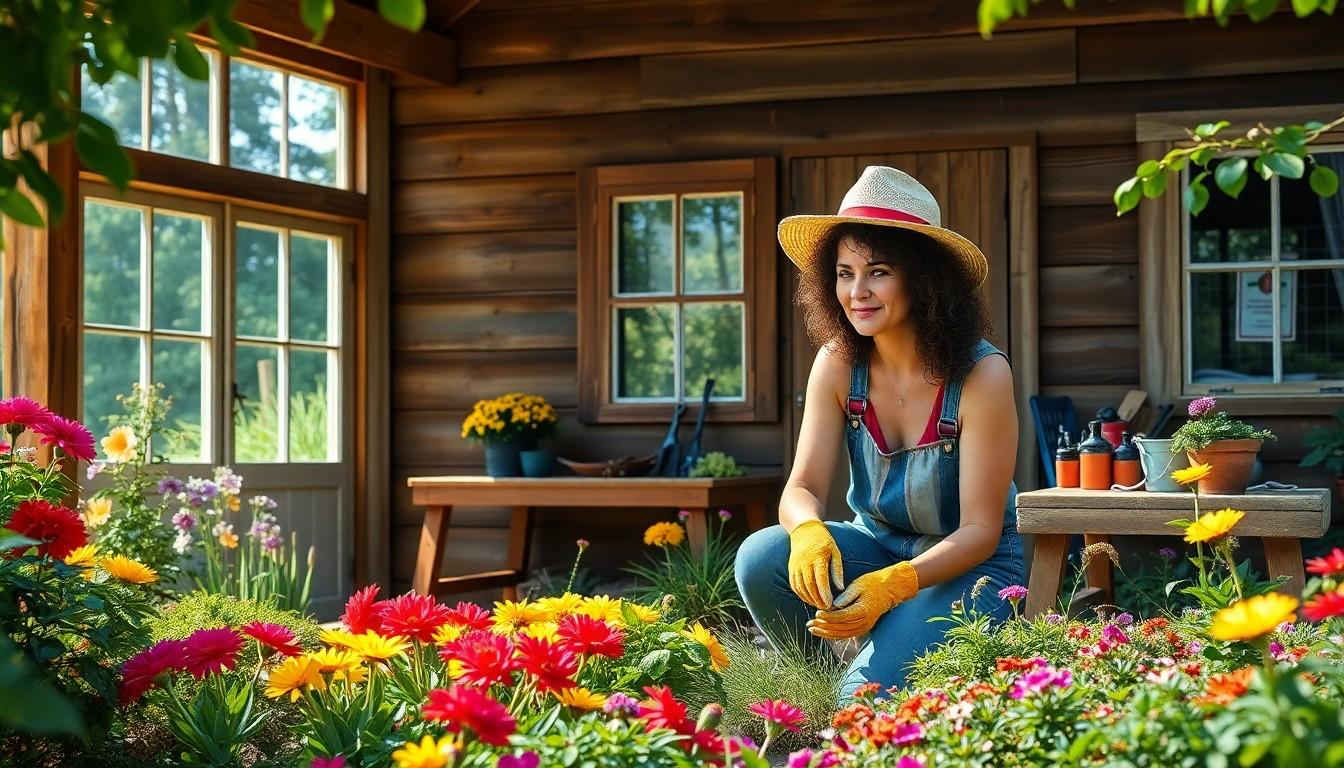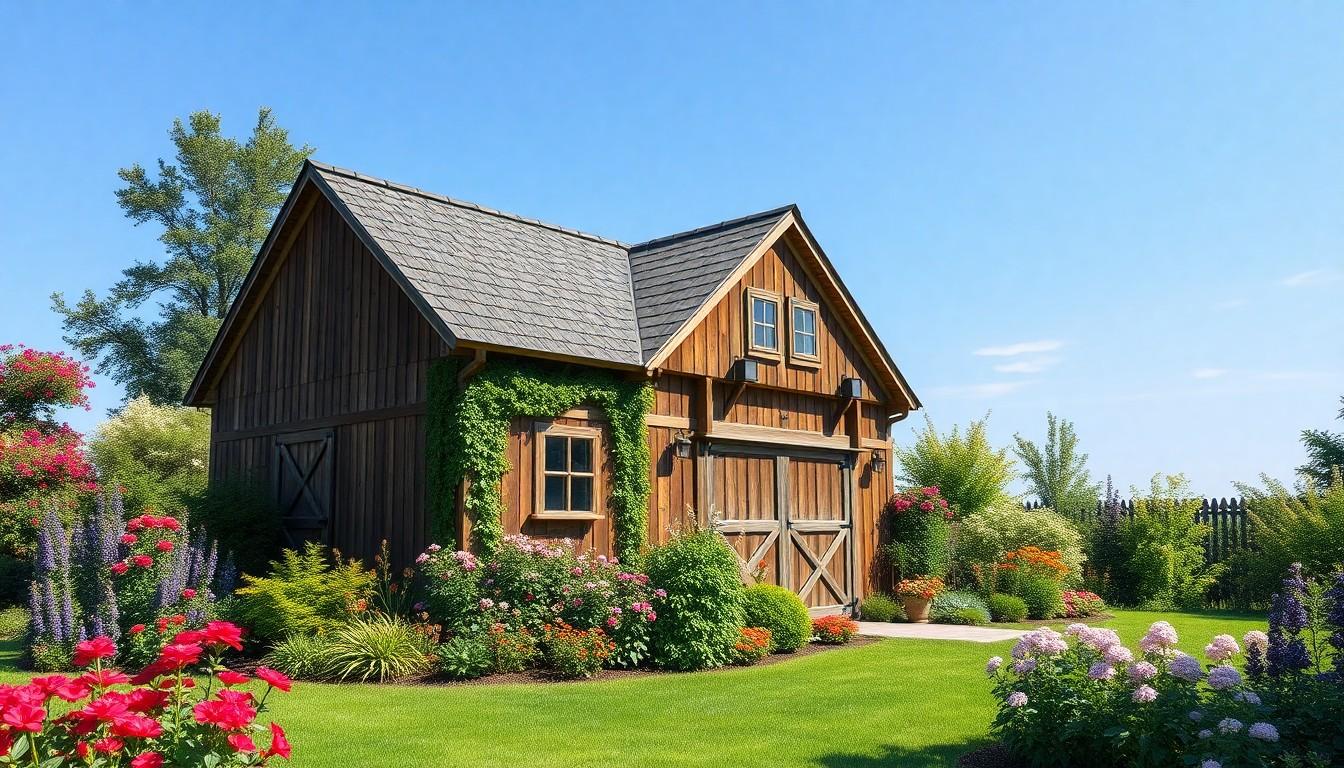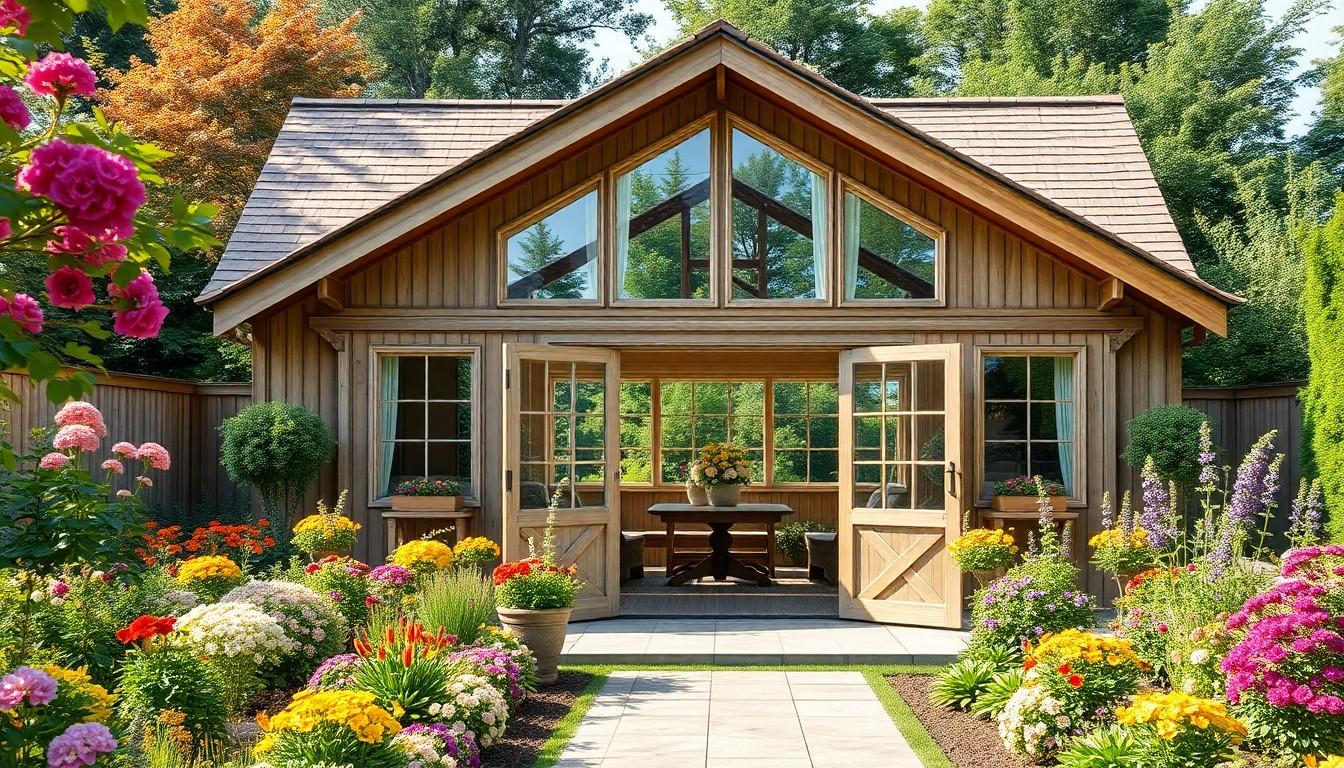Physical Address
304 North Cardinal St.
Dorchester Center, MA 02124

Imagine a place where the charm of rustic architecture meets the vibrant world of gardening. A garden barn is more than just a shed; it’s a sanctuary for green thumbs and a playground for DIY enthusiasts. With its spacious design and cozy vibe, it transforms the mundane task of gardening into an adventure that even your plants will appreciate.
Garden barns combine rustic charm with functionality, serving multiple purposes for gardeners. These structures provide essential storage for tools, seeds, and gardening supplies while creating a creative space for DIY projects. They enhance gardening experiences, offering a cozy retreat from the hustle and bustle.
Designs of garden barns vary widely. Some reflect traditional barn styles, while others incorporate modern aesthetics. The choice of materials can influence the overall look and durability. Wood remains a popular material due to its natural appearance and ability to blend with outdoor settings.
Space utilization is a key aspect of garden barns. Their layout often includes workbenches, shelving, and designated areas for pots and plants. Efficient spaces promote organization, ensuring that tools remain accessible and clutter stays minimal.
A garden barn can also be a gathering spot. Friends and family can enjoy outdoor activities together in a relaxing atmosphere. This shared space fosters community, allowing gardening enthusiasts to exchange tips and ideas.
Environmental considerations play a role in the popularity of garden barns. Many designs emphasize sustainability, utilizing reclaimed materials and energy-efficient features. Incorporating elements like rainwater collection systems supports eco-friendly practices.
Ultimately, garden barns elevate the gardening experience. They serve as functional spaces, creative hubs, and social areas. With designs tailored to individual preferences, these structures cater to diverse needs while enriching outdoor environments.

Garden barns stand out due to their versatile design and functionality. They can serve many purposes beyond storage, providing a space that inspires creativity.
Design options for garden barns range widely, accommodating diverse tastes. Traditional styles often feature peaked roofs and wooden siding, offering a rustic charm that complements the natural surroundings. Contemporary designs may include clean lines and large windows for ample light. Popular layouts incorporate open floor plans, enhancing the feeling of space, while the addition of porches can create inviting outdoor areas. Each design reflects personal style while catering to gardening needs.
Material choices significantly impact the aesthetics and durability of garden barns. Wood remains a favored option due to its warmth and beauty. Cedar and pine are commonly used for their resistance to decay and insects. Metal barns, often fabricated from steel, provide long-lasting protection against the elements. Moreover, eco-friendly materials like reclaimed wood and sustainable composites appeal to environmentally conscious builders. Selecting the right materials contributes to both the visual appeal and longevity of the space.
A garden barn provides numerous advantages, particularly for gardening enthusiasts. These structures streamline organization and enhance creativity.

These barns offer ample storage space for tools, equipment, and supplies. Gardeners benefit from neatly organized work areas that reduce clutter. Custom shelving and hooks can accommodate various items, keeping everything easily accessible. Weather-resistant designs protect gardening materials from the elements, ensuring longevity. Garden barns also provide a designated area for larger items like bags of soil and potting benches. Efficient space utilization maximizes functionality while promoting a tidy environment.
A garden barn serves as the perfect creative workspace for DIY projects and gardening activities. Natural light streaming through windows fosters an inspiring atmosphere for crafting and planting. Various work surfaces allow for hands-on experiences, encouraging experimentation and creativity. Many gardeners find that having a dedicated space boosts motivation and productivity. Moreover, hosting workshops or gatherings with friends becomes effortless within these inviting settings. Personalization options cater to individual tastes, transforming the barn into a unique reflection of their gardening passion.
Maintaining a garden barn ensures its longevity and functionality. Regular attention extends its life while providing a welcoming environment for gardening activities.
Spring demands a thorough inspection of the barn’s exterior. Look for signs of wear, such as chipped paint or rotting wood, and address them quickly. Summer maintenance involves checking for pests that may invade stored items. Use natural deterrents to keep the space pest-free. In fall, clean out debris and organize tools to prepare for winter storage. Winter care focuses on ensuring good insulation and checking the roof for snow buildup to prevent damage.
Regular inspections play a crucial role in upkeep. Schedule visits every few months to assess the structural integrity. Use protective finishes on exterior wood surfaces to enhance durability against weather elements. When storing tools, employ moisture-absorbing materials to prevent rust. Investing in quality ventilation solutions helps maintain air circulation, combating mold and mildew growth. Prioritizing these strategies maintains a healthy and functional garden barn for years.